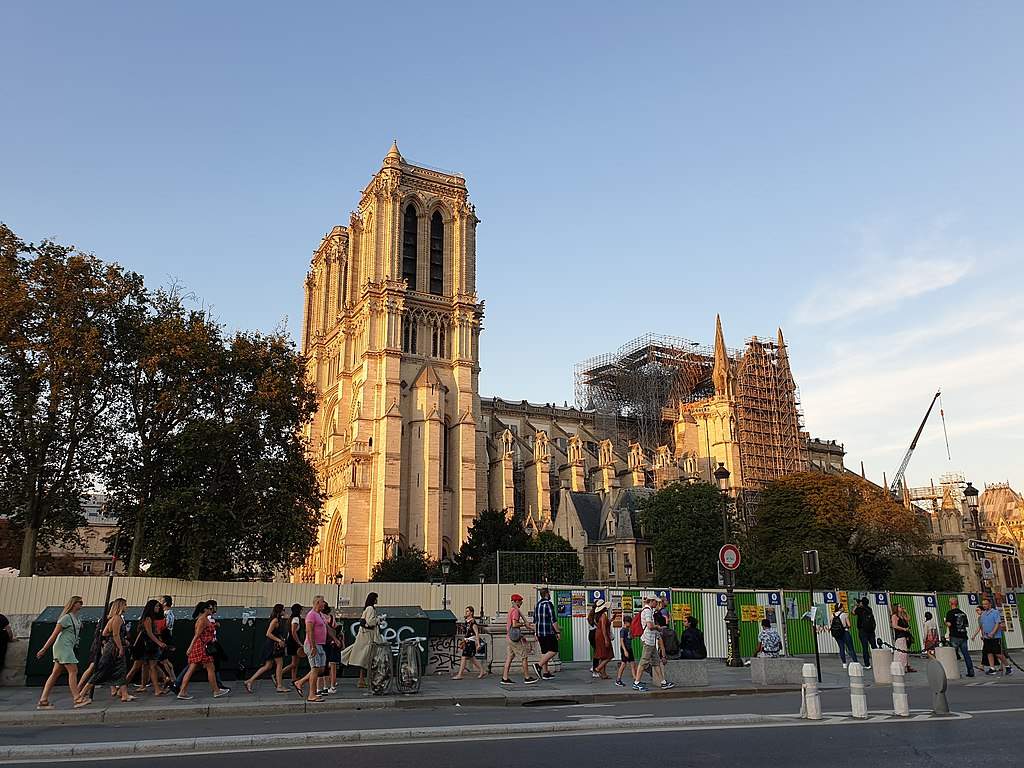Notre-Dame is still at risk of collapse. The denunciation of Philippe Villeneuve, the architect responsible for securing it.
Notre-Dame Cathedral in Paris is still at risk of collapse, despite exactly five months having passed since a devastating fire destroyed the building’s roof on April 15. The complaint comes from Philippe Villeneuve, the architect responsible for securing the cathedral, who gave a lengthy interview to the French newspaper Le Parisien on September 12.
Villeneuve made it known that at the moment we are still in the stages of securing and consolidating the building: the emergency phase is not yet over. “It is difficult,” Villeneuve said, “to predict a date when this consolidation period will end. We won’t really know for sure until at least mid-2020. And that is always disturbing.” The architect pointed out that the monument is still in double jeopardy: on the one hand, the vaults, which are still at risk of collapse, and on the other hand, the scaffolding system, installed for the restoration that was underway at the time of the fire, which could in turn collapse. “Between 200 and 300 tons of scrap metal were installed,” Villeneuve said. The scaffolding was erected so that it did not weigh down on the roof, but on the structure, and above all so that it was completely independent of the spire (which was later destroyed during the fire). “The result,” Villeneuve explains, “is that during the fire the scaffolding did not collapse. However, the pipes welded to each other and deformed. The side on which the spire collapsed became completely deformed. All this makes the structure very fragile, and it’s a miracle that it still holds.”
And indeed the scaffolding held even during the wave of bad weather that hit Paris this summer, with winds gusting to 100 kilometers per hour. The next step will be to lay the flooring that rests on the walls on which the building’s gutters are installed, after which the damaged scaffolding will be secured. “Then,” Villeneuve continues, “we will erect a new scaffolding that will end at 50 meters and on which will rest a system of beams: from there, the ropemakers will be able to lower and dismantle the pipes, one by one, from top to bottom. This operation will be finished in January 2020. That is our goal.” Finally, once this phase of dismantling the damaged scaffolding is finished, “we will go and install a first protective covering, followed by another one, placed at a higher level than the previously existing covering, in order to rebuild the future roof structures, whatever techniques and materials are chosen. We haven’t gotten to that point in the details yet, though. And that’s not my concern at the moment.”
Pictured: the Notre Dame construction site in August 2019. Ph. Credit
 |
| Notre-Dame is still at risk of collapse. The denunciation of Philippe Villeneuve, the architect responsible for securing it. |
Warning: the translation into English of the original Italian article was created using automatic tools. We undertake to review all articles, but we do not guarantee the total absence of inaccuracies in the translation due to the program. You can find the original by clicking on the ITA button. If you find any mistake,please contact us.




























